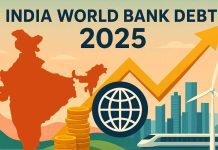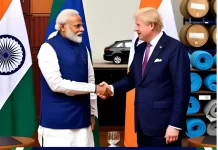🔥 PM Modi’s China Visit 2025: Trade, Diplomacy & India-China Relations Explained
New Delhi/Beijing, August 2025: Prime Minister Narendra Modi’s much-anticipated visit to China has captured the world’s attention. After years of icy relations, Modi and Chinese President Xi Jinping came face to face at the SCO Summit in Tianjin, marking a potential thaw in ties between the two Asian giants. The visit is being seen as more than just a diplomatic formality — it could reshape the future of India-China relations, trade, and geopolitical balance in Asia.
But the big question remains — is this the beginning of a new partnership, or just another diplomatic photo-op without real change? Let’s dive deep into the background, the visit itself, trade aspects, positives, negatives, and global impact.
📖 India-China Relations Over the Decades
India and China, the world’s two most populous nations, share a complex history of cooperation and conflict. From cultural exchanges along the ancient Silk Road to bitter border clashes, their relationship has often oscillated between friendship and hostility.
🔹 Key Moments in India-China Relations
- 1954 Panchsheel Agreement: India and China signed the Five Principles of Peaceful Coexistence, setting high hopes for friendship.
- 1962 Sino-Indian War: A devastating border conflict over Aksai Chin shattered trust.
- 1976 Diplomatic Reset: Ambassadors were re-exchanged, opening the path for engagement.
- 1993 Border Peace Agreement: Efforts to maintain peace along the Line of Actual Control (LAC).
- 2017 Doklam Standoff: A military face-off highlighted continuing tensions.
- 2020 Galwan Valley Clash: Deadly skirmishes left soldiers on both sides dead, freezing ties.
Despite these challenges, trade ties grew steadily, making China one of India’s biggest trading partners even amid political distrust.
🌏 The 2025 Visit: Modi Meets Xi Jinping
PM Modi arrived in Tianjin in August 2025 to attend the SCO Summit. His meeting with Chinese President Xi Jinping was one of the most anticipated bilateral engagements at the event.
“India and China are partners, not rivals. We must move forward together for Asia’s stability and prosperity.” — PM Narendra Modi
During the meeting, both leaders emphasized dialogue over conflict and pledged to strengthen cooperation in trade, investment, and global governance. President Xi proposed a four-point plan to reset ties, focusing on:
- Strengthening political communication
- Expanding bilateral trade and investment
- Boosting cultural and educational exchanges
- Coordinating in multilateral forums like SCO and BRICS
While Modi responded positively, Indian officials remained cautious, highlighting the need for progress on border security.
💰 Trade Deals & Economic Discussions
One of the main focuses of Modi’s China visit was trade. Despite the ongoing border disputes, economic ties remain vital. India’s trade with China touched $135 billion in 2024, though with a massive trade deficit skewed in China’s favor.
Key Trade Discussions in 2025:
- Market Access: India pushed for greater Chinese imports of Indian pharmaceuticals, IT services, and agricultural goods.
- Reducing Dependency: Talks on lowering India’s reliance on Chinese electronics, solar panels, and critical raw materials.
- Investments: China expressed interest in Indian manufacturing zones, but India emphasized security checks on such investments.
- Digital Cooperation: A cautious discussion on fintech and e-commerce, amid cyber security concerns.
For India, this was a chance to redefine trade ties on more equal terms, but risks remain high.
✅ Positive Outcomes for India
- Diplomatic Reset: Face-to-face dialogue after years of hostility could reduce border tensions.
- Economic Opportunity: Indian exporters may gain access to Chinese markets.
- Geopolitical Balance: Shows India’s independent diplomacy, not tied only to the US or West.
- Cultural Diplomacy: Renewed interest in cultural exchanges, including Buddhism and ancient ties.
❌ Negative Concerns for India
- Border Disputes Unresolved: Talks skirted around the LAC issue.
- Trade Deficit Risk: Greater imports may further harm Indian MSMEs.
- Security Worries: Dependence on Chinese tech could create vulnerabilities.
- Trust Deficit: China has a history of making promises but acting differently on ground realities.
🌐 Global Reactions
The global community closely watched Modi’s visit. Western nations like the US and EU expressed cautious optimism but urged India to avoid over-dependence on China. Meanwhile, Russia welcomed the dialogue, seeing it as a stabilizing move within the SCO and BRICS frameworks.
🔮 Future of India-China Relations
The success of Modi’s China visit will depend on what happens next:
- Will border talks lead to real peace agreements?
- Can India reduce its trade deficit with China?
- Will both nations cooperate on climate, technology, and global governance?
If implemented sincerely, the visit could mark a historic reset. But if mistrust continues, this might become just another missed opportunity.
PM Modi’s 2025 China visit was more than symbolic — it was a test of diplomacy, trade strategy, and geopolitical positioning. While positives like trade expansion and cultural diplomacy emerged, negatives like unresolved border tensions and dependency risks still loom large. For India, the challenge will be to balance cooperation with caution.
As Asia’s two biggest powers navigate this fragile friendship, the world will watch whether they choose partnership over rivalry in shaping the 21st century.
#ModiInChina #IndiaChinaRelations #SCOSummit2025 #TradeDeal #Geopolitics































